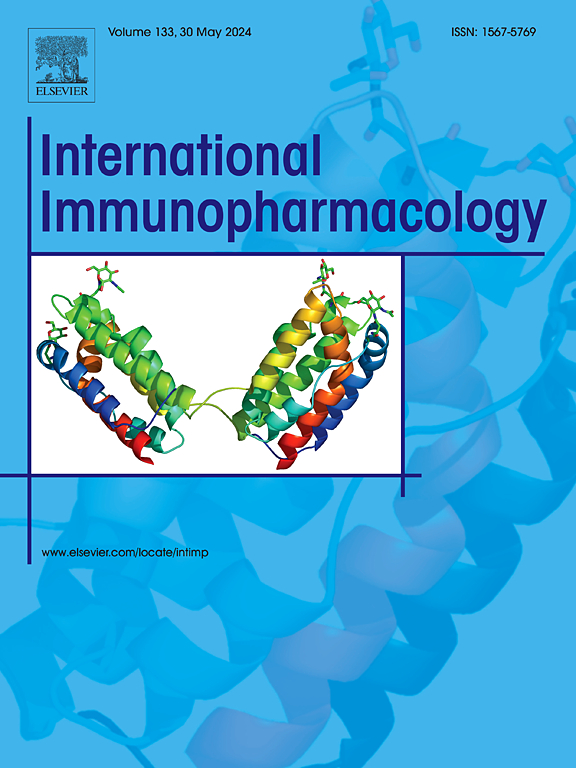Low-frequency ultrasound alleviates pulmonary inflammation induced by Klebsiella pneumoniae in mice by inhibiting the TNFR1/NF-κB pathway
IF 4.8
2区 医学
Q2 IMMUNOLOGY
引用次数: 0
Abstract
Background
Therapeutic ultrasound has been found to promote tissue healing and reduce inflammation in non-infectious diseases, but its efficacy in infectious inflammation remains unclear. Here, we employ the mice pneumonia model to explore the anti-inflammatory effects of low-frequency ultrasound (LFU) and elucidate its potential molecular mechanisms.
Methods
Pneumonia in mice was induced by intratracheal instillation of 100 μL of a 4.5 × 108 CFU/mL Klebsiella pneumoniae (Kp) bacterial suspension. A single LFU treatment (29.36 kHz, 270 mW/cm2, 10 min) was applied to the chest of mice at 6 or 48 h after infection. Biological samples were collected for gene, protein, and cellular experiments.
Results
LFU demonstrated good anti-inflammatory effects in mice during the recovery phase of Kp infection (48 h after infection). Although LFU alone had no bactericidal effects, it slightly reduced the pathological score of lung injury and significantly decreased the infiltration of CD45+ leukocytes. Additionally, the protein levels of TNF-α, GM-CSF and COX-2 in the bronchoalveolar lavage fluid were significantly reduced. Bulk RNA-sequencing results showed that the TNF receptor (TNFR)/NF-κB pathway was up-regulated after Kp infection, which was suppressed after LFU treatment. Western blot and immunofluorescence revealed LFU significantly reduced the protein levels of TNFR1, p-p65, and nuclear p65. The anti-inflammatory effect of LFU was comparable to a 20 mg/kg NF-κB inhibitor and superior to a 15 mg/kg TNFR antagonist.
Conclusion
LFU exerts anti-inflammatory effects by inhibiting the TNFR1/NF-κB pathway during the recovery period of Kp infection, reducing inflammatory transcription and thereby decreasing the release of inflammatory factors.

求助全文
约1分钟内获得全文
求助全文
来源期刊
CiteScore
8.40
自引率
3.60%
发文量
935
审稿时长
53 days
期刊介绍:
International Immunopharmacology is the primary vehicle for the publication of original research papers pertinent to the overlapping areas of immunology, pharmacology, cytokine biology, immunotherapy, immunopathology and immunotoxicology. Review articles that encompass these subjects are also welcome.
The subject material appropriate for submission includes:
• Clinical studies employing immunotherapy of any type including the use of: bacterial and chemical agents; thymic hormones, interferon, lymphokines, etc., in transplantation and diseases such as cancer, immunodeficiency, chronic infection and allergic, inflammatory or autoimmune disorders.
• Studies on the mechanisms of action of these agents for specific parameters of immune competence as well as the overall clinical state.
• Pre-clinical animal studies and in vitro studies on mechanisms of action with immunopotentiators, immunomodulators, immunoadjuvants and other pharmacological agents active on cells participating in immune or allergic responses.
• Pharmacological compounds, microbial products and toxicological agents that affect the lymphoid system, and their mechanisms of action.
• Agents that activate genes or modify transcription and translation within the immune response.
• Substances activated, generated, or released through immunologic or related pathways that are pharmacologically active.
• Production, function and regulation of cytokines and their receptors.
• Classical pharmacological studies on the effects of chemokines and bioactive factors released during immunological reactions.

 求助内容:
求助内容: 应助结果提醒方式:
应助结果提醒方式:


